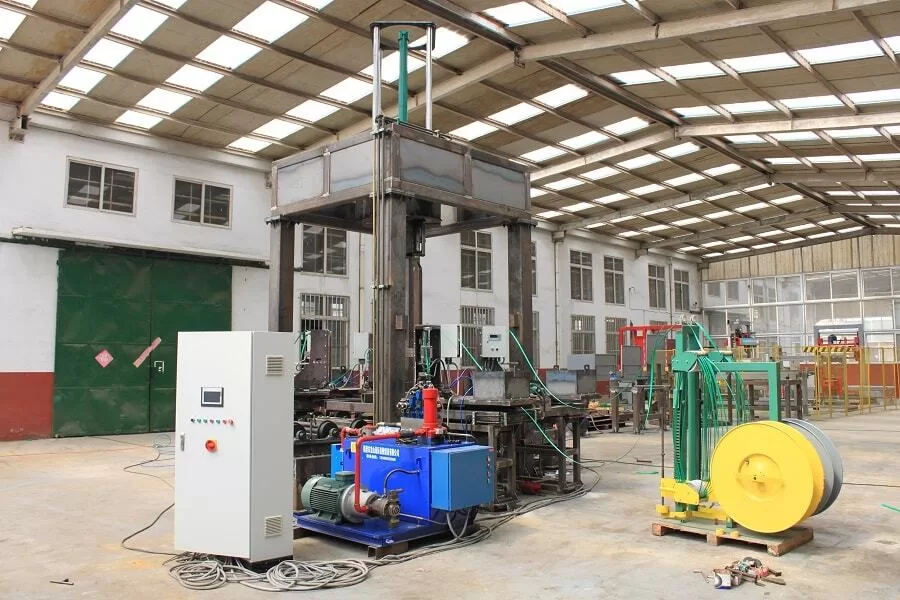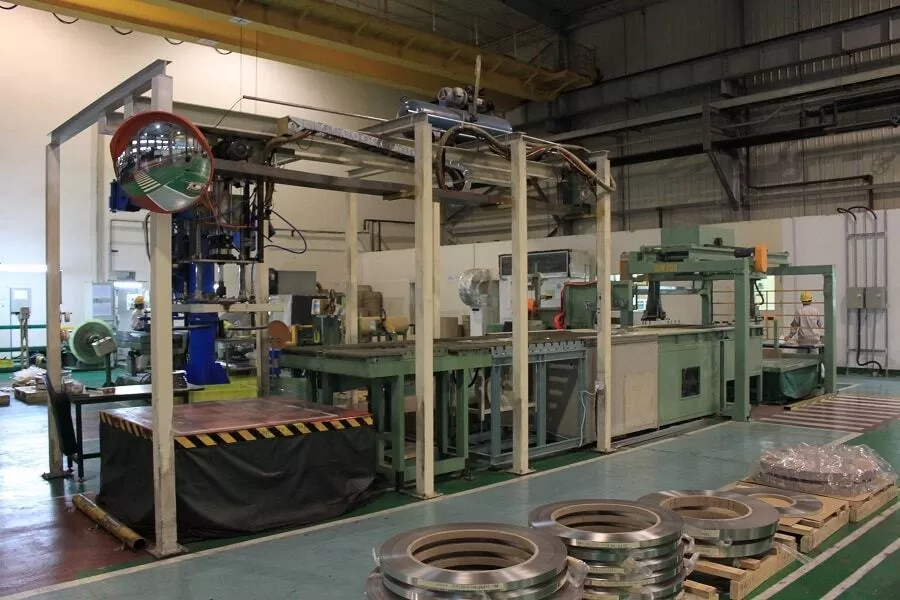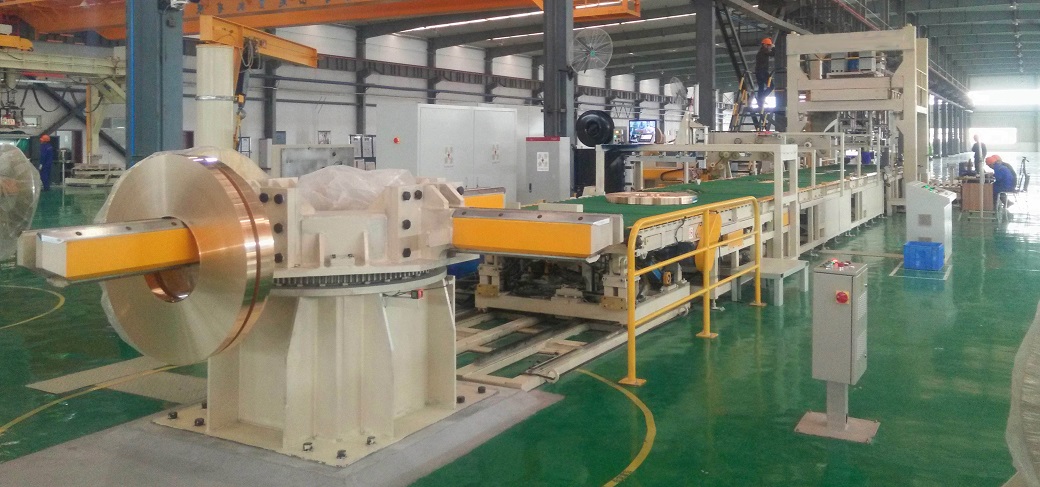As a steel mill owner in Europe, you are on the front lines of a major battle. The enemy? Soaring and unpredictable energy costs. Every month, you see electricity and fuel prices chipping away at your hard-earned profits. You’ve optimized your furnaces and streamlined production, but the packaging area remains a constant, nagging drain on your resources. It feels like you’re running a marathon with weights tied to your ankles, and it’s frustrating to see your efforts undermined by inefficient, outdated equipment.
A modern, automated steel coil packing line can significantly slash your energy bills. It achieves this by using high-efficiency servo motors and variable frequency drives (VFDs) that consume less direct power. It also reduces indirect energy use by streamlining workflow, minimizing the need for energy-intensive auxiliary equipment like forklifts, and optimizing the use of packaging materials, which themselves require energy to produce. This dual approach tackles both visible and hidden energy costs.

I have spent my entire career in the packing machine industry. I started on the factory floor and eventually built my own company, SHJLPACK. I’ve seen firsthand how a single piece of equipment can change the fortunes of a business. It’s not just about wrapping steel; it’s about making your entire operation leaner, stronger, and more profitable. Let's look closely at how a new packing line can be a powerful tool in your fight against high energy costs. We will break down exactly where the savings come from.
How Does an Automated Packing Line Directly Reduce Power Consumption?
Your current packing line might be a reliable workhorse, but it's likely a product of a different era. Older machines were built for power, not for efficiency. They often run hydraulic systems and oversized motors that consume a constant, high level of electricity, regardless of whether they are actively packing a coil. This constant drain is a silent killer of your profit margins, an invisible leak in your operational budget. You see the high number on your utility bill, but it's hard to pinpoint the exact culprit when everything is always running at full tilt.
An automated packing line directly reduces power consumption by using intelligent and efficient components like servo motors and Variable Frequency Drives (VFDs). Unlike older hydraulic or clutch-brake systems, these modern technologies use energy on demand. The machine only draws significant power during the actual wrapping, strapping, or conveying actions, and enters a low-power state when idle, dramatically cutting down on wasted electricity.

Let's dive deeper into the specific technologies that make this possible. The biggest change is the shift from hydraulic power units to all-electric servo systems.
From Hydraulic Hogs to Electric Efficiency
I remember visiting a steel plant where the hum of the old hydraulic packing line's power unit was constant. That sound was the sound of money being wasted. Hydraulic systems need a motor to run continuously to maintain pressure, even when the machine is waiting for the next coil. This is a huge source of standby power consumption.
Modern all-electric lines replace this with precise servo motors. A servo motor only activates when it needs to perform a task—like rotating the wrapping shuttle or moving a strapping head. When the task is done, it stops and draws minimal power. The difference is night and day.
Let's compare the two systems:
| Feature | Old Hydraulic System | Modern Servo System | Energy Impact |
|---|---|---|---|
| Standby Power | High (motor runs continuously) | Very Low (motor is off/idle) | Significant energy savings during idle times between coils. |
| Operating Power | High and inefficient | Efficient, power used for work | Less energy is lost as heat; more electricity is converted into useful motion. |
| Maintenance | High (oil leaks, filter changes) | Low (fewer moving parts) | Reduced maintenance downtime also means the line is productive, not just consuming power while being fixed. |
| Precision | Lower | Very High | Better precision means fewer rejected packages and less material waste, which has its own embedded energy cost. |
The Power of Variable Frequency Drives (VFDs)
Another key component is the Variable Frequency Drive, or VFD. In older systems, conveyor belts are often run by motors that are either fully on or fully off. They run at a single, fixed speed, often faster than necessary, just to be safe. VFDs allow you to precisely control the speed of these motors. The conveyor can accelerate smoothly, run at the optimal speed for the coil size, and then decelerate. According to engineering principles, the power consumed by a motor is proportional to the cube of its speed. This means even a small reduction in speed can lead to a large reduction in energy consumption. A 20% speed reduction can lead to a nearly 50% power saving for that motor. These savings add up quickly across all the conveyors in a packing line.
Can Modern Packing Lines Lower Indirect Energy Costs Across the Plant?
When you think about the energy cost of your packing line, you probably focus on the electricity it consumes directly. But this is only part of the story. Your packing area creates many hidden, or "indirect," energy costs throughout your plant. Think about the diesel or electricity for the forklifts that transport coils. Consider the cost of heating and lighting a large, sprawling packing bay. And what about the energy embedded in every meter of wasted stretch film or steel strapping? These costs are real, and they add up significantly.
Yes, a modern packing line can substantially lower these indirect energy costs. It achieves this by creating a more integrated and compact workflow. This reduces the travel distance and operational time for material handling equipment like cranes and forklifts. A smaller footprint also means less space to heat, cool, and illuminate. Furthermore, precision automation minimizes the consumption of packaging materials, saving the energy that was used to produce them in the first place.

Let’s explore these indirect savings in more detail. The goal is to move beyond the machine's plug and look at the entire packaging ecosystem. I have always advised my clients that the greatest efficiencies are found not in a single machine, but in the flow of the process.
Optimizing Material Flow and Reducing Handling
A traditional packing area is often chaotic. Coils arrive from the slitter, are placed in a large staging area, and then a forklift picks one up and takes it to a standalone strapping machine. Then, it might be moved to a separate wrapping machine, and finally to a weighing station before being taken to storage. Each movement consumes energy.
A modern, integrated packing line combines these steps into a single, continuous flow. The coil comes directly from the slitter onto the packing line's infeed conveyor. It is automatically moved through strapping, wrapping, weighing, and labeling stations without ever being lifted by a forklift.
Here's how that impacts your plant's energy use:
| Process Step | Traditional Layout (High Indirect Energy) | Integrated Line (Low Indirect Energy) |
|---|---|---|
| Coil Transport | Multiple forklift/crane lifts per coil. | Single entry onto a conveyor system. |
| Equipment Used | Forklifts, cranes, multiple standalone machines. | One integrated line with efficient conveyors. |
| Space Required | Large floor area for staging and machine spacing. | Compact, linear footprint. |
| Personnel Movement | Operators walk long distances between machines. | Operators monitor a central control station. |
This streamlined process drastically cuts down on the operational hours of your forklifts and overhead cranes. This saves fuel or electricity, reduces maintenance on that equipment, and also improves safety in the plant.
The Energy Cost of Wasted Materials
Every bit of packaging material you use has an "embedded" energy cost. It took a significant amount of energy to produce and transport that steel strap or plastic film to your factory. When a package is poorly wrapped or a strap is misapplied, you don't just waste the material; you waste all the energy that went into making it. Modern packing lines are incredibly precise. They use sensors to measure the coil's exact dimensions and apply the perfect amount of film with the optimal tension. This eliminates the guesswork and inconsistency of manual or semi-automatic operations, reducing material waste by as much as 15-20%. This is a direct saving on your consumables budget and an indirect saving on your total energy footprint.
What Role Does Data and IoT Play in Optimizing Energy Use?
You can't improve what you don't measure. For many steel mill owners, the energy bill is just a large, frustrating number. You know it's high, but you lack the detailed information to understand why. Is a specific motor failing? Is one shift using more power than another? Without data, you are making decisions in the dark. This lack of visibility makes it nearly impossible to create a targeted energy reduction strategy. You might be focusing on the big furnaces while smaller, inefficient machines are silently draining your resources.
Data and the Internet of Things (IoT) play a crucial role by making energy consumption visible and actionable. By embedding sensors in the packing line, you can monitor the real-time power usage of individual components. This data can be used to identify inefficiencies, schedule predictive maintenance to prevent energy-wasting failures, and integrate the packing line into a plant-wide Manufacturing Execution System (MES) for holistic energy optimization.

Let's move away from abstract concepts and talk about practical applications. When I founded SHJLPACK, my goal was not just to build machines, but to provide total solutions. Today, a solution without data is incomplete. Here is how we turn data into energy savings for our clients.
Making Energy Consumption Visible
The first step is measurement. We integrate power meters and sensors directly onto key components of the packing line:
- The main drive motors
- The wrapping ring motor
- Conveyor drives
- Hydraulic pumps (if any)
- Heating elements for film sealing
These sensors feed data to the machine's control panel (HMI) and can be sent to a central factory database. Instead of one big energy bill, you now have a detailed breakdown.
| Data Point | Actionable Insight | Potential Energy Saving |
|---|---|---|
| Real-time kWh per component | Identify the most energy-intensive parts of the packing cycle. | Focus optimization efforts where they have the most impact. |
| Energy use per coil packed | Benchmark efficiency across different coil sizes, shifts, or operators. | Create best practices and training to improve the average. |
| Idle time power consumption | Quantify the cost of waiting for coils or downtime. | Justify process improvements upstream to ensure a steady flow. |
| Current draw on motors | Detect trends of increasing power use over time. | Flag a motor for inspection before it fails. |
From Reactive Repairs to Predictive Maintenance
That last point is critical. A motor that is about to fail often draws more and more current as its bearings wear out or its windings degrade. This is wasted energy. An IoT-enabled system can detect this subtle increase and trigger a maintenance alert. This allows your team to service the motor during planned downtime instead of waiting for a catastrophic, production-stopping failure. Predictive maintenance doesn't just improve uptime; it is a powerful energy management tool, ensuring all components are running at their designed efficiency. It turns your maintenance team from firefighters into strategic partners in cost reduction. This is a core part of achieving the 95% uptime you're aiming for.
My Insight: Why a Partner, Not a Supplier, Is Key to Energy Savings?
When you are facing intense pressures—from volatile energy markets in Europe to demands for higher efficiency—it is easy to see a new machine as a simple transaction. You have a problem, you buy a piece of equipment to fix it. Many suppliers are happy with this arrangement. They will sell you a machine, install it, and then their job is done. But I learned early in my career that this approach often leaves the biggest opportunities for improvement on the table, especially when it comes to long-term energy savings.
The true impact on your energy bills comes not from the machine itself, but from how it's integrated into your entire operation. A supplier sells you a product. A partner, on the other hand, invests in your success. They work with you to design a holistic solution, ensure it's commissioned for peak efficiency, and provide ongoing support to keep it that way. This partnership is the most critical factor in maximizing your return on investment.

This philosophy is the reason I founded SHJLPACK. After working my way up in a factory, I saw countless times how a poorly planned installation or a lack of follow-up support turned a promising investment into a long-term headache. When I started my own company, I made a promise to do things differently. My slogan, "TOTAL SOLUTION FOR WRAPPING MACHINE," is not just marketing; it is the core of how we operate.
The Three Pillars of a True Partnership
A partnership that delivers real energy savings is built on three pillars:
-
Collaborative Design and System Integration: A supplier might ask for your coil dimensions and give you a standard machine. A partner starts by analyzing your entire workflow. Where do the coils come from? What are the bottlenecks? What is the skill level of your operators? We look at the whole picture. We might suggest a change in the layout to reduce conveyor length or a different type of strapping that requires less energy. This initial design phase is where up to 70% of the long-term energy efficiency is locked in. It’s about designing the system, not just the machine.
-
Meticulous Commissioning and Training: The installation and commissioning phase is not just about getting the machine to run. It’s about tuning it for your specific products and environment. A partner will fine-tune every VFD, calibrate every sensor, and optimize every cycle time to squeeze out every watt of wasted energy. Crucially, they will also train your operators and maintenance staff not just on how to use the machine, but on how to run it efficiently. They will explain what the energy data means and how to react to it. An empowered team is your first line of defense against energy waste.
-
Long-Term Support and Continuous Improvement: The energy market and environmental regulations in Europe are constantly changing. A partner stays with you on the journey. This means regular performance audits, suggesting software updates that improve efficiency, and advising on new upgrades or material technologies that can further reduce your consumption. The goal is to ensure that your packing line is as efficient in year ten as it was in year one. It’s a continuous dialogue focused on your key goal: reducing operating costs.
Choosing a partner is a strategic decision. It’s about finding an expert who shares your goals and is committed to helping you achieve them for the long haul.
Conclusion
A modern packing line is a strategic investment in energy efficiency. It directly cuts power use and reduces indirect costs, helping you stay competitive in the demanding European market.





